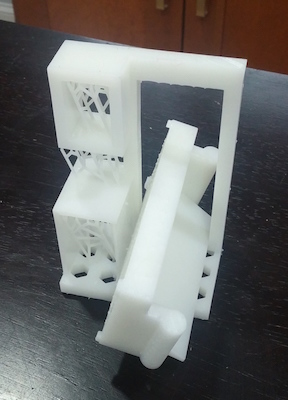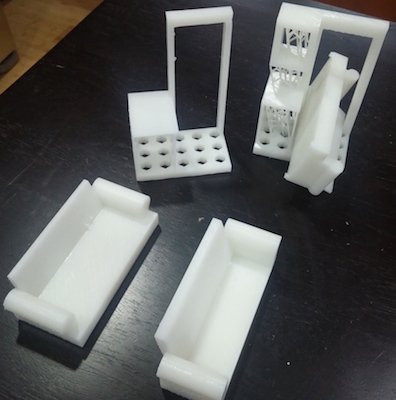Bio
My name is Kevin Cedrone. I was born and raised near Toronto, Ontario. I received a BASc in Mechanical Engineering from the University of Waterloo in 2008. As an undergrad I did an internship at a nuclear power plant in France. While there I acquired French language skills and an appreciation for travel, and French food. Then I moved to Boston for graduate school. My original plan was to get a Masters and return to Canada. Five years later I received my PhD in Mechanical Engineering from MIT. My PhD minor is Mandarin Chinese. As a grad student I spent more than a month traveling in China testing my skills.
Hobbies, Projects and Interests
- Project Euler. I'm up to the mid 40s
- Swimming laps with an underwater mp3 player
- Cycling around New England (Strava). Life is better on 2 wheels.
- Home brewing beer
- Sailing
- Cold-brewing coffee
- Building a coffee maker with precise control of temperature and steep time.
- Hop pellets to improve weak pilsners when traveling.
- Making tap handles out of engine camshafts
- Gravimetric femrmentation monitor.
- Thinking about converting my pilot's license and getting back in the cockpit of a C-172
3D printed scale models
When we moved to our new house, we discovered that the 1920s era doorways and
stairway were too narrow for our couch. We used 3D printed scale model furniture
(and house sections) to decide between structural modifications, a 2nd floor hoist
job or buying new furniture.

 Further research confirmed The Moving Sofa Problem is a pretty tricky one!
Further research confirmed The Moving Sofa Problem is a pretty tricky one!
Distracted driving app idea
Use phone GPS and/or accelerometer to monitor speed
When speed exceeds a preset threshold,
The phone locks itself1 unless it is held both:
1. Upright (verified by accelerometers), and
2. At face level (verified by front-facing camera)
Why?
-This app helps law enforcement and the greater public identify and shame/penalize distracted drivers.
-People riding as passengers in cars, or on public transit are minimally inconvenienced.
-As a cyclist, I have had one too many close calls with texting drivers.
-If you are so important your messages can't wait, hire a driver. If not, pull over.
1Or defaults to a navigation screen.
Car detector
When I ride my bicycle faster than ~25 km/h, wind noise makes it difficult to hear cars
approaching from behind. This is especially true for hybrid and electric vehicles.
In fact, NHTSA will soon require that automakers add artificial noise to "quiet vehicles"1.
The aim is to help visually impaired pedestrians, but cyclists will benefit.
For cyclists, there are a number of existing solutions, including:
-frequent shoulder checks
-mirror on handlebar(s)
-mirror on helmet
-bicycle wind noise reducer
-rear-facing radar
The behavioural solutions depend on the terrain, it's not always safe to take your eyes off the road ahead.
The mirrors depend on your posture, and the appearance and even the driving style of the vehicle.
I've had cars and electric scooters attempt to pass on the right! The wind noise reducers have
limited effectiveness above ~30 km/h, and would probably get sweaty and gross on a long ride.
The rear facing radar seems great, but expensive.
I notice that by partially turning my head to the side, I can usually "cancel" enough wind
noise to hear car tire noise. The effectiveness of this technique depends on the direction of
headwinds and crosswinds. This inspired my idea for an audio car detector. My concept uses a
rear-facing microphone and an Arduino microcontroller for signal processing. I filter to listen
for tire noise around 1 kHz2-4.
In stationary tests, when wind noise is negligible, my gadget detects approaching cars, and can
distinguish between oncoming cars (approaching from front) and overtaking cars (approaching from rear).
In road-based tests however, the signal is overwhelmed by wind noise. Wind noise is mainly low
frequency (<~500 Hz), but there is pesky spectral content up to 2 kHz, which overwhlems my 1 kHz
tire noise target frequency.
I unsuccessfully tried a few different shields on the microphone.
Now I am working on a way to use a second microphone: One microphone faces "up", perpendicular to
my direction of travel to capture wind noise, and one facing back, to detect cars approaching
from behind. I'm playing with techniques for "subtracting" the effect of wind-noise.
2Ref. 1
3Ref. 2
4Ref. 3
Warmr: An app to help in dating / meet-ups / scavenger hunts, etc.
Ability to save a point-of-interest (POI).
Ability to send the POI to other people.
Feedback on how close you are to a POI-proximity
Feedback is given in the form of the childhood game of hot and cold (e.g. getting warmer, getting WARMER, etc.)
Why?
-It used to be harder to send Google Maps pins
-It is fun to navigate by landmarks and more fun still with vague mixed-temperature-metaphors.
-You could rope cafes and bars into paying to be "hot-spots"
Winter pair-up: post-winter lost-and-found
Collect gloves, scarves, hats and mittens found during winter
These are often on benches and fences after big snowstorms.
Launder them
Pair them up
Distribute:
donate to shelters
sell at thrift shops
Why?
-People don't seem to come back for these one-offs (I've seen the same glove sit on a fence post all winter!)
-These one-offs probably end up in the trash in the spring
-One glove is significantly less valuable/useful than a pair.
-Having an exactly matched pair of gloves is not critical